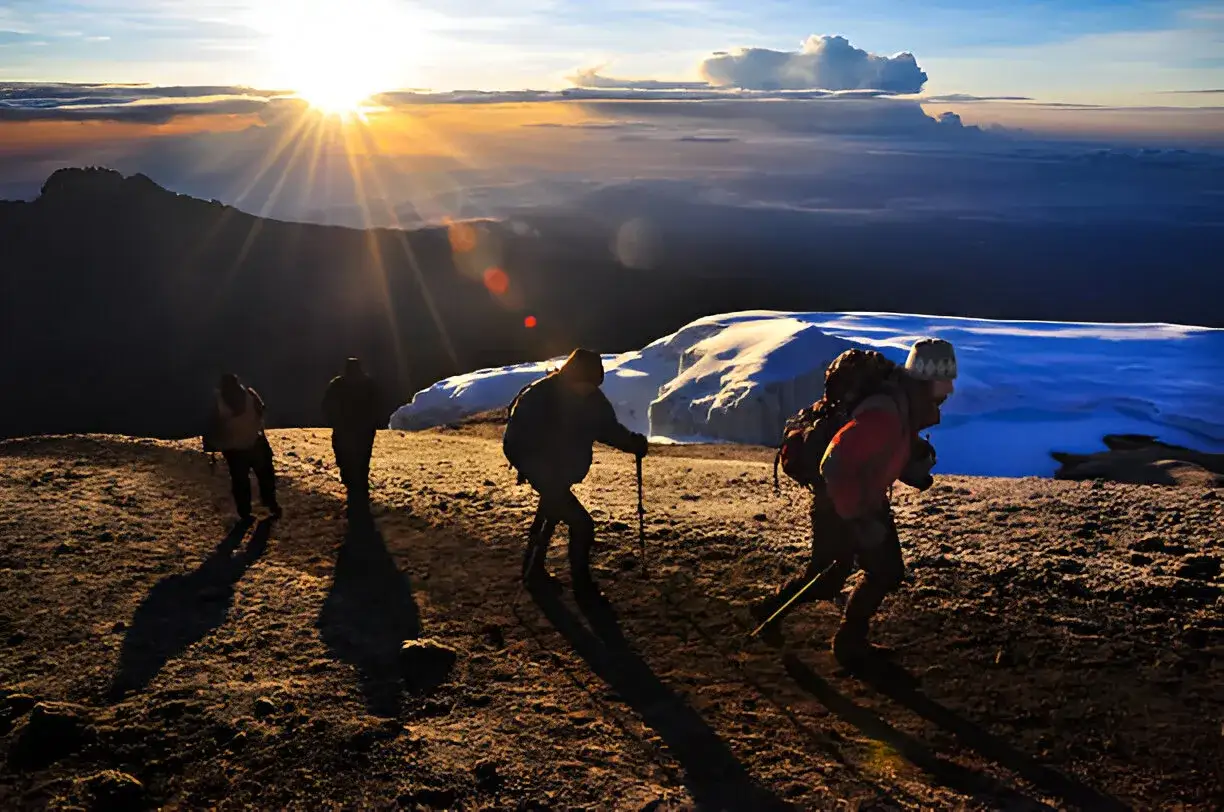Understanding Acclimatization on Kilimanjaro Treks
Acclimatization is the process by which your body adjusts to lower oxygen levels at high altitude. On Kilimanjaro, as you ascend above 2,500 meters (8,200 feet), the air becomes thinner, making it harder to breathe. Without proper acclimatization, trekkers risk developing altitude sickness, which can range from mild discomfort to life-threatening conditions like HAPE (High Altitude Pulmonary Edema) or HACE (High Altitude Cerebral Edema). The key to a successful Kilimanjaro climb is gradual ascent, hydration, rest, and choosing an itinerary that allows your body enough time to adapt.

What is Acclimatization?
Acclimatization refers to your body’s natural ability to adapt to decreasing oxygen levels at higher altitudes. As you ascend Mount Kilimanjaro, the atmospheric pressure drops, meaning there’s less oxygen in each breath you take. To compensate, your body begins a complex physiological process to maintain oxygen delivery to your tissues.
Why is Acclimatization Important for Kilimanjaro Climbers?
Kilimanjaro's summit, Uhuru Peak, sits at 5,895 meters (19,341 feet). This extreme elevation requires careful pacing and preparation. Without proper acclimatization, your risk of experiencing Acute Mountain Sickness (AMS) increases. Symptoms may include headaches, nausea, dizziness, and fatigue. In severe cases, altitude sickness can become fatal.
How the Body Acclimatizes at Altitude
- Increased Breathing Rate: Your body breathes faster to increase oxygen intake
- Elevated Heart Rate: Your heart pumps faster to circulate oxygen more efficiently
- Production of More Red Blood Cells: These help carry oxygen to tissues
- Changes in Cellular Activity: Your body becomes more efficient at using available oxygen
This process takes time, which is why itineraries with more days are recommended for a safer and more successful summit attempt.
Best Practices for Acclimatization on Kilimanjaro
- Choose Longer Routes: Routes like Lemosho, Machame (7-day), or Northern Circuit offer better acclimatization than shorter options
- Climb High, Sleep Low: Incorporate acclimatization hikes to higher altitudes during the day, then descend slightly to sleep
- Hydrate Well: Drink at least 3–4 liters of water daily to help your body adapt
- Avoid Alcohol & Smoking: These hinder the acclimatization process
- Consider Acetazolamide (Diamox): A preventive medication that can assist with acclimatization
Recommended Kilimanjaro Routes for Acclimatization
Not all Kilimanjaro routes offer equal chances for proper acclimatization. Here are top choices:
- Lemosho Route (7 or 8 days): Ideal for gradual ascent and scenic acclimatization hikes
- Northern Circuit (9 days): The best for adaptation due to its extended itinerary
- Machame route (7 days): Good for those with moderate trekking experience
- Rongai Route (6 or 7 days): Offers steady acclimatization but fewer climb-high-sleep-low opportunities
Altitude Sickness Symptoms to Watch For
Recognizing the signs early is crucial. Common symptoms include:
- Persistent headache
- Loss of appetite
- Nausea or vomiting
- Fatigue or weakness
- Difficulty sleeping
- Dizziness or light-headedness
Always report symptoms to your guide. At Jaynevy Tours, our team is trained to monitor your health and make informed decisions on whether to continue or descend.
Acclimatization Tips from Kilimanjaro Experts
- Take it slow: Don’t rush—your pace affects your oxygen intake
- Eat carbs: High-carb foods help maintain energy at altitude
- Use trekking poles: They help reduce effort and balance your pace
- Stay positive: Your mental attitude plays a big role in physical performance
Frequently Asked Questions
How long does it take to acclimatize on Kilimanjaro?
It depends on your route, but generally 7–9 days on the mountain allows for proper acclimatization and significantly improves summit success rates.
Is it possible to summit without acclimatizing?
Summiting without adequate acclimatization is dangerous and can lead to severe altitude sickness. We strongly recommend choosing a longer route with built-in adaptation time.
Can I train to improve acclimatization?
While you can’t fully simulate high-altitude oxygen levels, aerobic fitness and pre-acclimatization hikes above 3,000m help prepare your body.
Should I take Diamox for Kilimanjaro?
Many climbers use Diamox to aid in acclimatization. Always consult your doctor before using this medication, and understand the possible side effects.
For more information about acclimatization, route planning, or climbing Kilimanjaro safely, contact us via WhatsApp: +255 678 992 599 or email jaynevytours@gmail.com.
BOOKING FORM
Book your tour here
RELATED PACKAGES
- Baraka Aquarium and Nungwi Village in Zanzibar
- Diving Tour in Zanzibar
- Zanzibar Sky Diving Tour
- Dolphin Snorkeling Sandbank Tour in Zanzibar
- Horse Riding Tour in Zanzibar
- Jet Ski Tour in Zanzibar
- Jozani Forest Visiting in Zanzibar
- Quad Bike Tour in Zanzibar
- Traditional Sunset Dhow Cruise Tour in Zanzibar
- The Best Stone Town Tour in Zanzibar
- Zanzibar Butterfly Tour
MORE PACKAGES
- Mount Kilimanjaro
- Ngorongoro Crater
- Serengeti National Park
- Tarangire National Park
- Lake Manyara National Park
- Zanzibar Island
- East Africa Packages
- Tanzania Safari From Zanzibar
- Kenya packages
- Rwanda Packages
- Uganda packages
- Mikumi National Park
- Kitulo National park
- Mkomazi National park
- Selous (Nyerere National Park)
